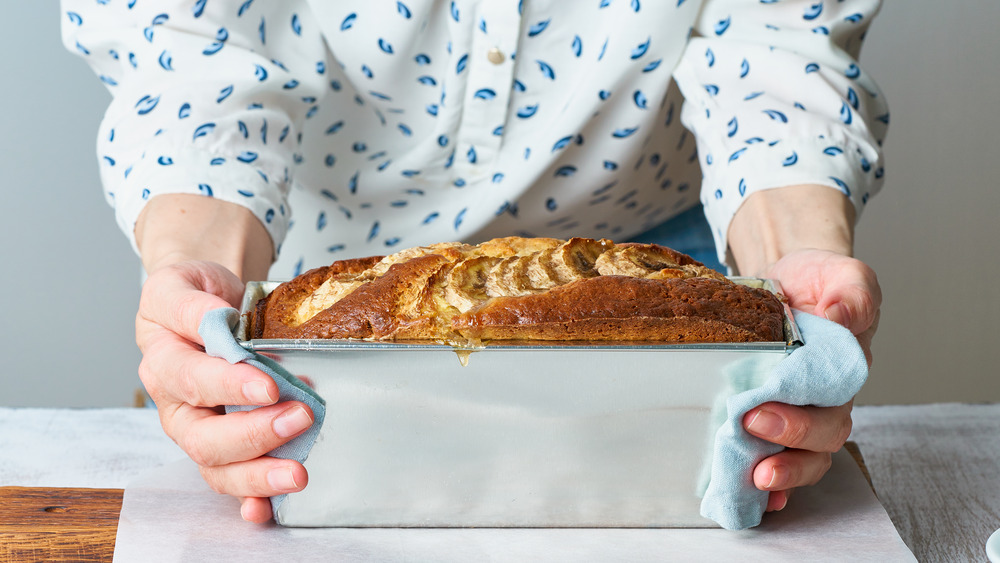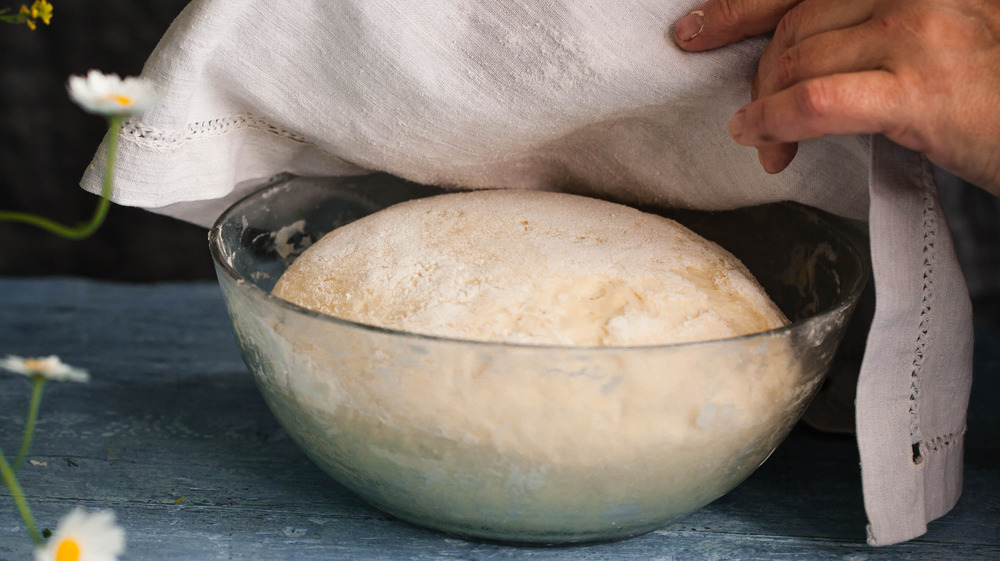Everything You Need To Know About Proofing Bread
"Stress baking," says The Guardian, is a common way for many people to relax. The peacefulness of kneading dough allows the mind to calm, focusing only on the actions of the hands and overlooking our worries of the past and future. For those finding the baking bug a closely held joy, an important step to create bread like an expert is following tried and true methods for proofing bread dough.
Simply, proofing bread means giving the dough enough time to rise, which The Spruce Eats explains is caused by yeast within the bread mixture fermenting. Although bread is typically proofed at room temperature by placing it in a container and covering it with a damp towel (via Taste of Home), there are several other ways to achieve a perfectly puffy loaf.
Sometimes room temperature is insufficient to get bread dough to proof adequately, resulting in a need for an influx of heat. To do this, you can place bread dough in the middle of your oven with a dish full of boiling water at the bottom.
The rise of bread and slow cookers
Of course, not even bread can escape the slow cooker hype, as Taste of Home says the popular machines can also be used in the proofing process. In a similar method to proofing in an oven, to proof bread in a slow cooker you simply fill it half full with water and heat it on a low temperature. Then, flip the lid of the slow cooker over, cover it with a cloth, and balance the container of bread dough on top.
The final bread proofing measure to consider is to enlist the help of a proofing box. As shared by MasterClass, the structure is specifically made to cover the bread dough, allowing it to capture more warmth and humidity than other conventional options. Taste of Home shares that this method can also enable the dough to proof at a faster rate, making it an ideal kitchen addition for particularly enthusiastic bakers.
Now that you know the difference between the most common methods for proofing bread dough, you can choose the right one for you every time.

